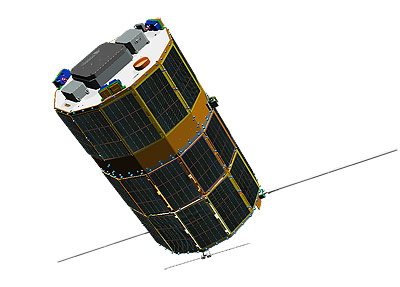NPSat1 (original) (raw)

NPSat1 [NPS]
NPSAT 1 (Naval Postgraduate School Satellite 1) is a low-cost satellite designed by the Naval Postgraduate School (NPS) hosting a number of space flight experiments to investigate space weather and the flight demonstration of space technology.
Commercial, off-the-shelf (COTS)-based technology will be implemented with custom designs to offer a low-cost command and data handling (C&DH) subsystem building on commercial, desktop PC architecture and standards-based specifications.
In addition to an experimental C&DH subsystem, NPSAT1 will demonstrate the use of non-volatile ferroelectric RAM which is inherently radiation-tolerant and a lithium-ion battery, state-of-the-art technology that will be employed offering high energy density (Watt-hr/kg) for space applications.
Experiments on-board NPSAT1 include two Naval Research Laboratory (NRL) payloads:
- The coherent electromagnetic radio tomography (CERTO) experiment and
- a Langmuir probe.
The CERTO experiment is a radio beacon which, in concert with ground station receivers, is used to measure total-electron-content (TEC) in the ionosphere. The Langmuir probe will augment CERTO data by providing on-orbit measurements.
The other experiments are of NPS origin.
- a novel design for a configurable, fault-tolerant spacecraft computer board,
- a COTS visible (wavelength) imager (VISIM),
- Solar Cell Measurement System (SMS),
- and some micro-electromechanical systems (MEMS)-based rate sensors.
NPSAT1 was to be launched in 2007 on the STP-1 mission with ASTRO,NEXTSat/CSC, STPSat 1, CFESat, MidSTAR 1, FalconSat 3, but was delayed.
The SMS experiment was later also flown on a dedicated cubesat mission, NPS-SCAT.
Finally, NPSAT1 was manifested on the STP-2 mission in 2017 on a Falcon-Heavy (Block 5) rocket and was launched in June 2019.